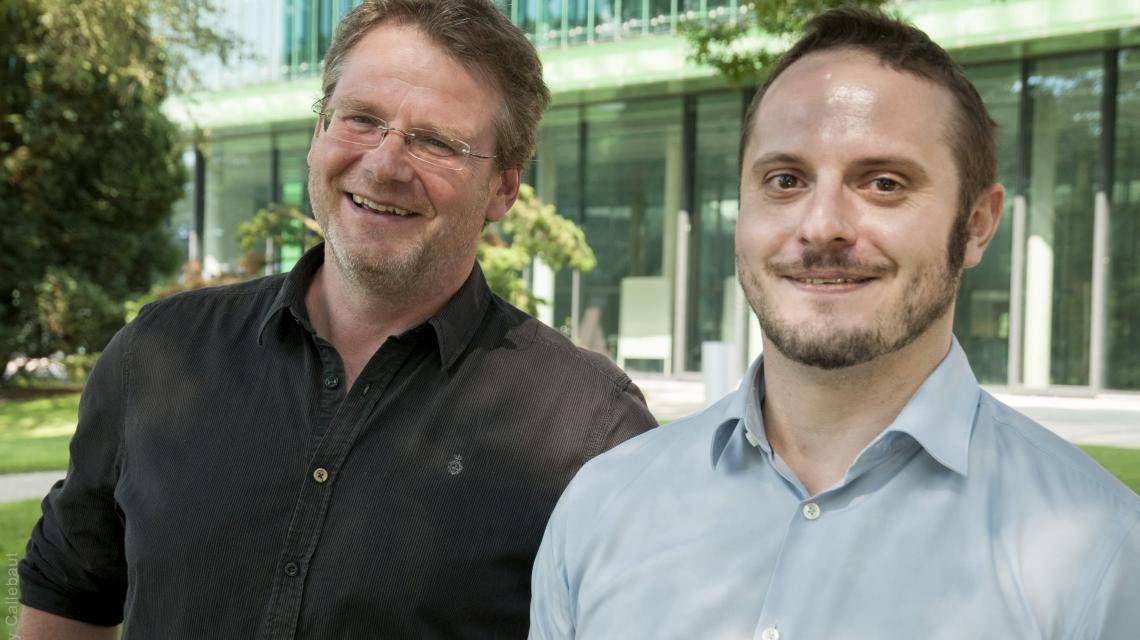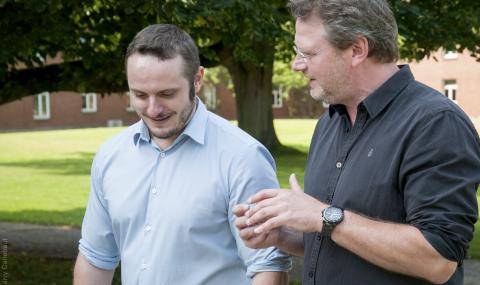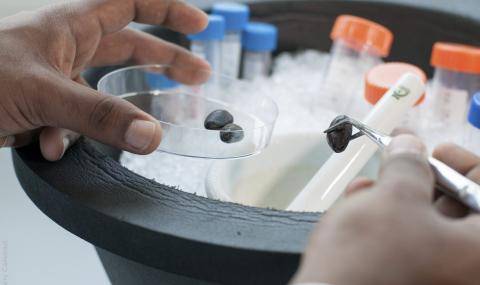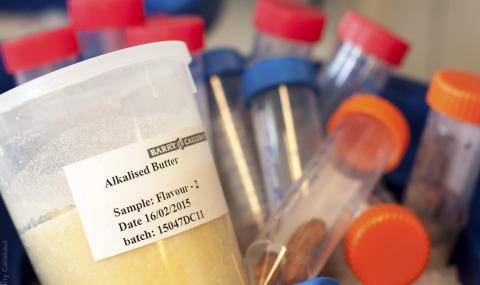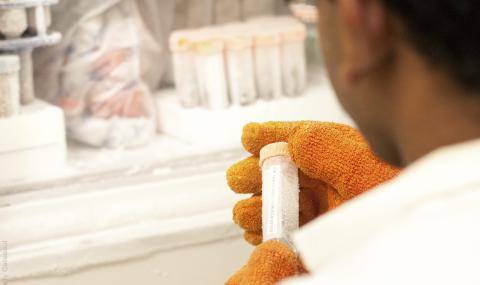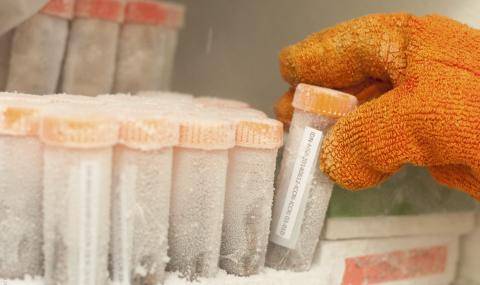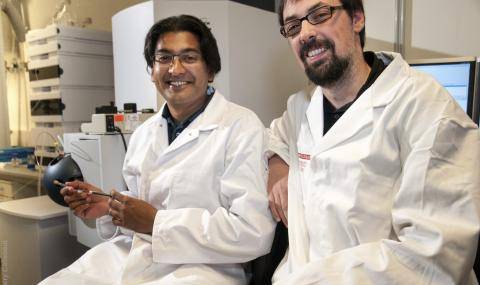Cracking the molecular code - to create a true atlas of cocoa
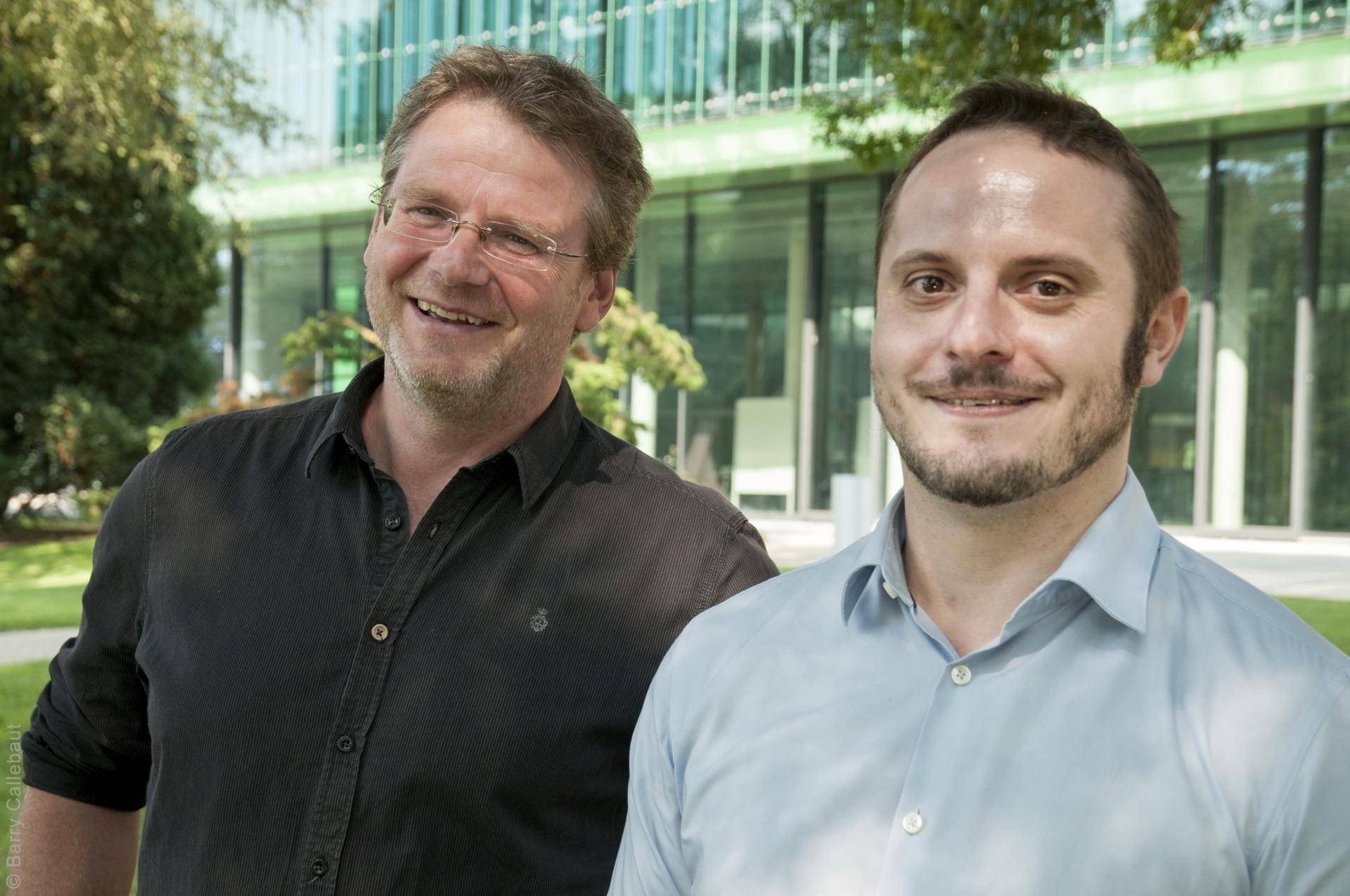
Cracking the molecular code - to create a true atlas of cocoa
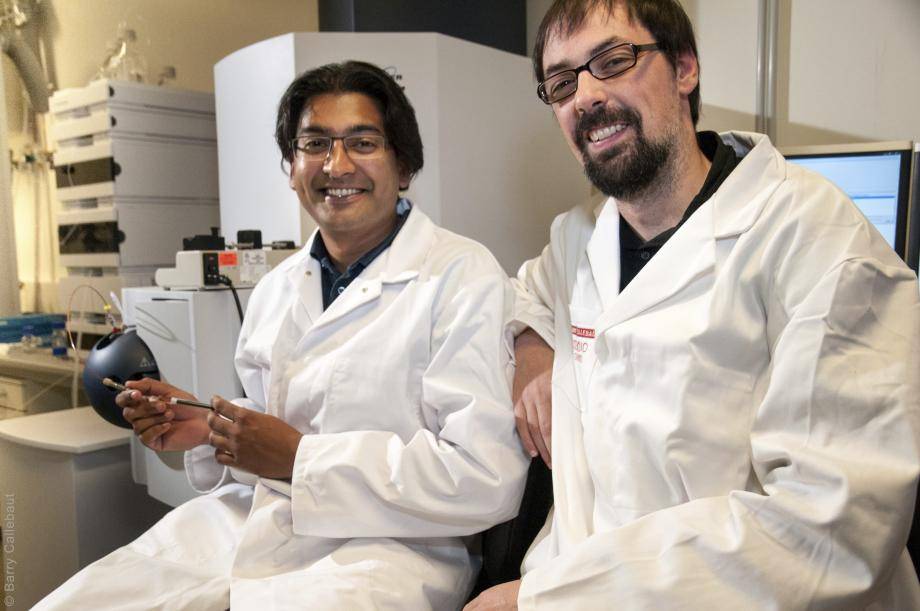
We interviewed Prof. Matthias Ullrich (left) and Gino Vrancken (right) on the status quo of the COMETA project.
COMETA – a source of inspiration to create new kinds of chocolates
Thanks to technological breakthroughs in the last decade, we should finally be able to map how all the molecules in the cocoa bean interact throughout the chocolate-making process to give cocoa powder and chocolate its taste, color and intensity.
If the interdisciplinary team of scientists from Jacobs University, Bremen (Germany) and from Barry Callebaut achieves its ambitious goals, we will crack the molecular code of cacao by 2020. For the first time since we started cultivating cacao, almost three thousand years ago, we will truly understand cacao.
To find out more where the project currently stands, we talked to both Gino Vrancken (Project Lead at Barry Callebaut) and Prof. Matthias Ullrich (Project coordinator at Jacobs University) about COMETA (for Cocoa METAbolomics).
We interviewed Prof. Matthias Ullrich (left) and Gino Vrancken (right) on the status quo of the COMETA project.

The cocoa bean is the most complex foodstuff on earth - COMETA aims to reveal all the hidden secrets.
Cometa is one of Barry Callebaut’s largest and most ambitious research projects today, which was started in 2014 and is scheduled to run until 2020.
Gino Vrancken notes, “A few years ago we decided that, as Barry Callebaut, we wanted to understand cocoa better. And we embarked on what we thought would be a small-scale project: to understand color in cocoa. We thought it would be a straightforward project. After all, color and pigment in food are quite well understood. It should have been a routine project. Unfortunately, our research didn't provide answers, only more questions. After two years, we grew incredibly frustrated, and we reviewed the entire project.”
“What we learned was that the problem was not our research or our methodology. It was the object being researched. Cocoa is hugely complex. It is the most complex biological substance on earth - more complex than tea, even. We knew that cocoa was special, of course. We just hadn't expected it to be this special.”
The company reached out to Professor Matthias Ullrich of Jacobs University Bremen for help. After some preliminary research Ullrich, a genial scientist who looks a bit like Russell Crowe, became convinced that the color project was doomed to fail from the start.
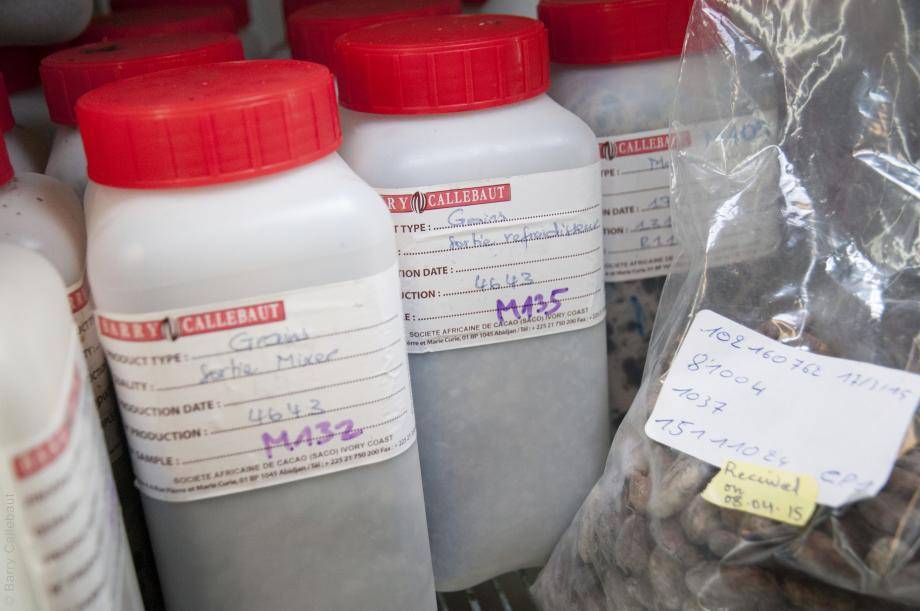
Prof. Matthias Ullrich: "But cocoa is not a riddle. Cocoa is a mystery."
Prof. Ullrich adds, “You have to understand that cocoa is in a category all by itself. You can't approach it the way you do other foods. I told Barry Callebaut: you tried to solve a riddle. But cocoa is not a riddle. Cocoa is a mystery.”
And Gino Vrancken remembers: “So here we were, thinking that we could tackle cocoa project by project - like conquering one hill at a time to explore a continent. What we found instead was that we had ventured into a huge challenge; not a hill, but the Himalayas, if you want. And we realized that we had two choices: abandon the project entirely. Or we could go big: we could try to be the first company to understand absolutely everything about cocoa. It didn't take us long to decide that because, hey, we are Barry Callebaut. If anybody will do this, it has to be us.”
Technological breakthroughs needed
The first thing the research team at Jacobs University needed to do was to get an idea of the scope of the project. It quickly became evident that it would go beyond what they had done before, according to Ullrich. “Raw cocoa is made up of something like twenty thousand molecules. When processing the bean, this complexity only increases. We don't know why. Biologically speaking, cocoa is one of a kind - not even its closest nephews are as complex, or behave the way cacao does. So that became the aim of the project: to understand everything about cocoa, to know which molecules interact with which other molecules, and why. Our goal is to understand how cocoa behaves in every step of the process - from the raw beans to the fermentation stage, to the roasting, grinding, alkalization phase and all this across hundreds of cocoa samples from across the world, and at the highest level of detail. If we succeed, we will understand how different processes along the way affect important quality characteristics of the end product - like color, or taste.”
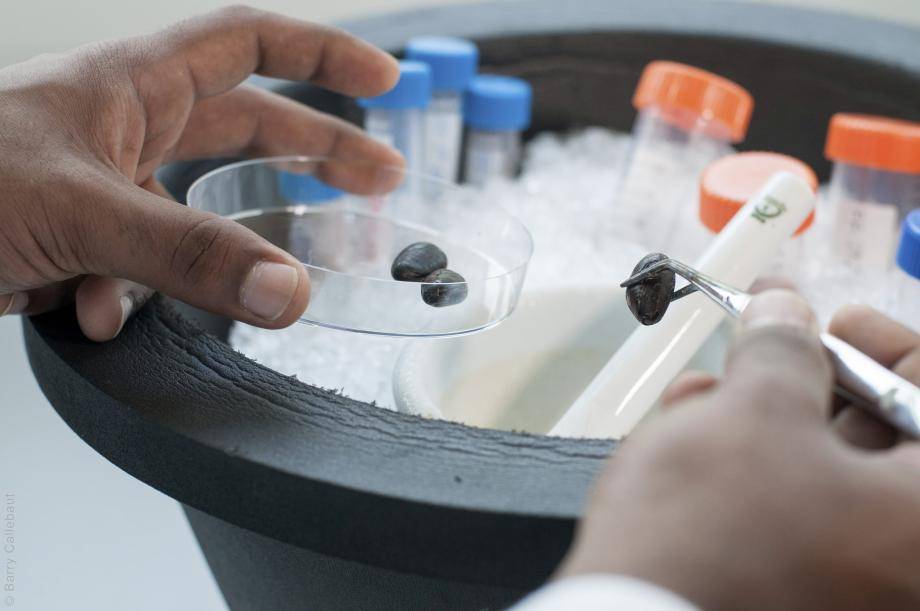
The research team was able to tune mass spectrometers. This allowed them to analyze the large number of cocoa molecules at the same time.
Borrowing technology from the petrochemical industry
The problem is that conventional food science would not be much help in the case of cocoa. It would not begin to address the complexity of the product. Luckily, there have been breakthroughs in completely unrelated fields in the last decade. So there is good confidence.
“In order to analyze cocoa at the high resolution that we needed,” points out Prof. Ullrich, "we had to borrow the latest technology that is used in the petrochemical industry and in life sciences, like cancer research. We were able to tune mass spectrometers so that they would allow us to analyze a large number of cocoa molecules at the same time.”
Prof. Ullrich continues, “Now, once we analyzed all these samples, the next challenge was to integrate all the information. It's another thing that has never been done. Some people have studied the fats in cocoa, or the polyphenols - but no one has tried to bring it all together in a comprehensive study. Our goal is to create a true atlas of cocoa. That means that we need to be able to relate all these different pieces of the puzzle to one another.”
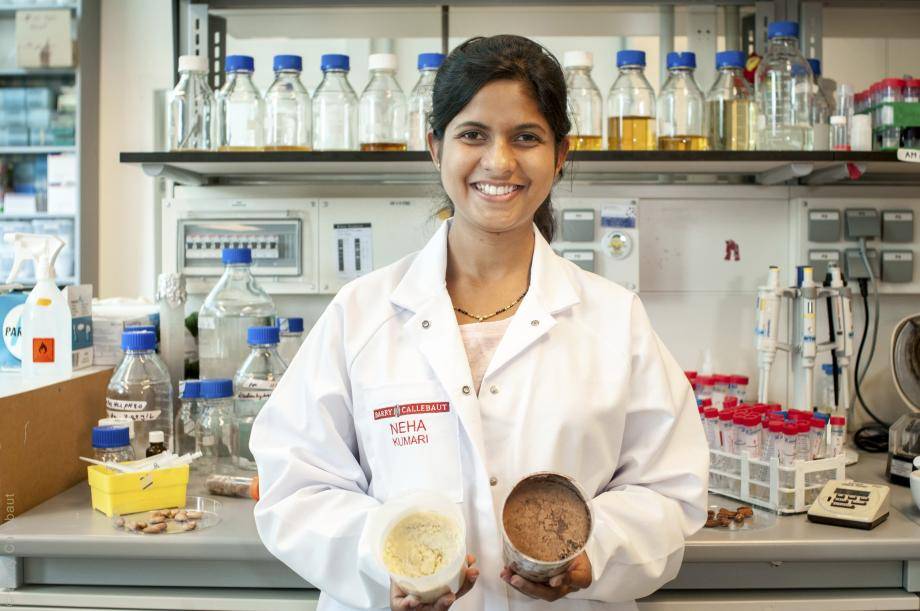
Barry Callebaut employee involved in the COMETA project.
First insights already implemented in Barry Callebaut's cocoa processing
The COMETA project is a six-year project, now in its second year. Already, the research is yielding valuable insights to the team.
“A first discovery, about one year in the project,” notes Prof. Ullrich, “was that we saw which proteins and lipids get degraded in the fermentation process and which do not - and how the fermentation technique affects this. With this knowledge, we were immediately able to spin off an implementation project for cocoa butter. We are now in a position to redesign new manufacturing processes that saves the cocoa butter from dark chocolate, which so far had gone to waste.”
Discovering things that were unknown to science so far
“We have made great progress with one kind of pre-cursors, namely the proteins,” Gino Vrancken adds. “But there are still others left to be mapped in great detail: the fats, sugars and polyphenols for example. And we talked about fermentation. But further down the chain there are so many other processing steps to which cocoa is subjected. We also want to understand how the precursors to key quality characteristics are impacted through the drying, roasting, alkalization, grinding, etc. of cocoa. Having said this, we have quite a bit of work facing us in the next 4.5 years.”
But true to form, while cocoa is offering up answers to some questions, it's also raising more questions and surprises according to Vrancken. “What amazes me is that, of the twenty thousand molecules that we have now identified in cocoa, about three-fourths of them are polyphenols that were unknown to science. Mind you, we have studied polyphenols in depth at Barry Callebaut, so this is not unknown territory to us. Thus I would have been surprised to learn that we found ten or twenty new polyphenols. Instead, we are finding thousands. We have no clue why this is - why this plant is going so insane. The thing about polyphenols is that they are highly reactive, so we know that they might have an impact on the taste of the product in the end. And we don't know a single one of them, let alone how they interact!”
“For me, there are two major surprises in this research,” says Prof. Ullrich. “First is the level of detail that we are achieving. If we compare our research with the research that others have done before us, the resolution that we are getting is truly groundbreaking. Another surprise is the importance of fermentation. We see differences in composition of the beans, even when the beans look exactly the same. There is probably a lot we can learn about fermentation in this project.”
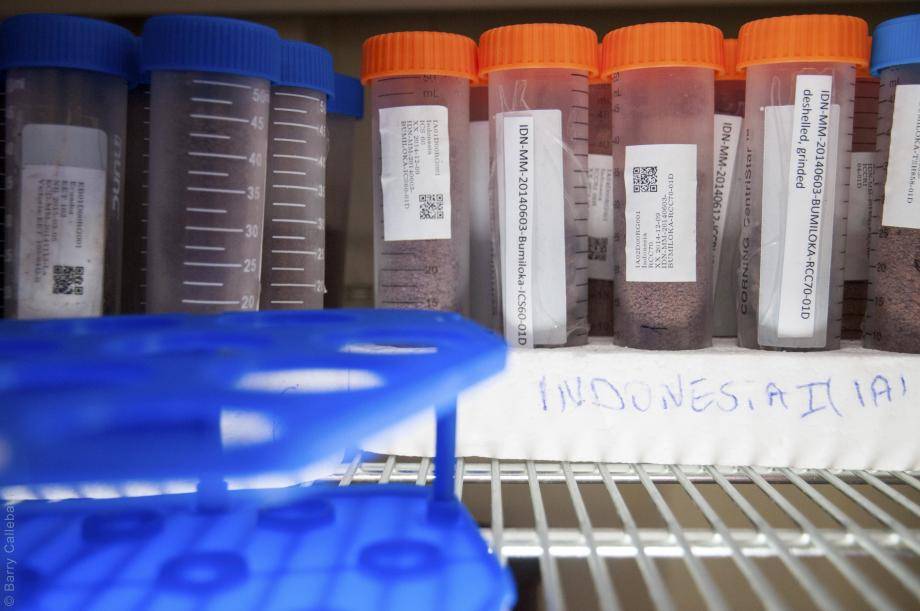
Gino Vrancken is convinced: "We will be able to tailor the choice of cocoa beans for each product for each customer, and our research will no doubt help farmers increase the quality of their yields."
Will the COMETA research end up creating new kinds of chocolate?
“That could be,” replies Gino Vrancken. “All of the insights derived from COMETA will help Barry Callebaut innovate and fine-tune its chocolate production processes in the years to come. We’ve already had one spin-off with the dark chocolate cocoa butter. But I’d dare to say this is only the beginning. We will be able to tailor the choice of cocoa beans for each product for each customer, and our research will no doubt help farmers increase the quality of their yields. This will motivate them to stay in the cocoa business.”
“So, yes, it might result in new products. But we don't know yet what we will find. The main goal of this project is not to create a specific new product. The goal is to create an entirely new source of inspiration for the entire company. Normally, inspiration comes from our customers, or competition, or technology. With COMETA, we are creating a way to tap into an entirely new source of very powerful inspiration, one that touches every person and every process in our company: cacao itself. So stay tuned. There is more to come from us.”
Annexe
What is Mass Spectronomy?
Prof. Ullrich explains, “A mass spectrometer identifies chemicals in a substance (so, in our case, the cocoa bean) by their mass. The particles of the substance are ionized, that is (we give them a positive or negative charge.) And we then beam them – so to speak – through an electromagnetic field. The manner in which they end up being deflected is indicative of their mass, thus, of their identity. There are animated clips on YouTube that give you a pretty good impression of the process, I especially like this one that uses a hairdryer to start explaining the process.”
